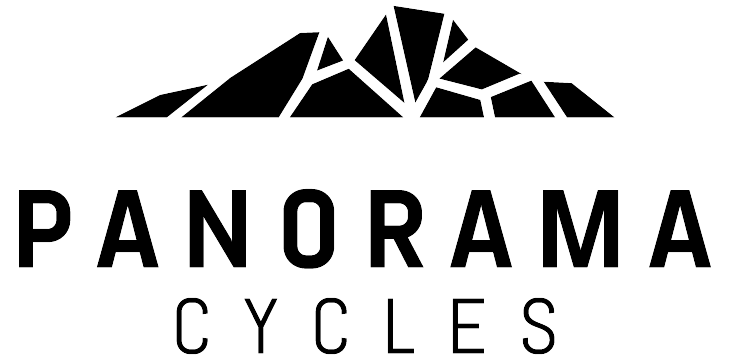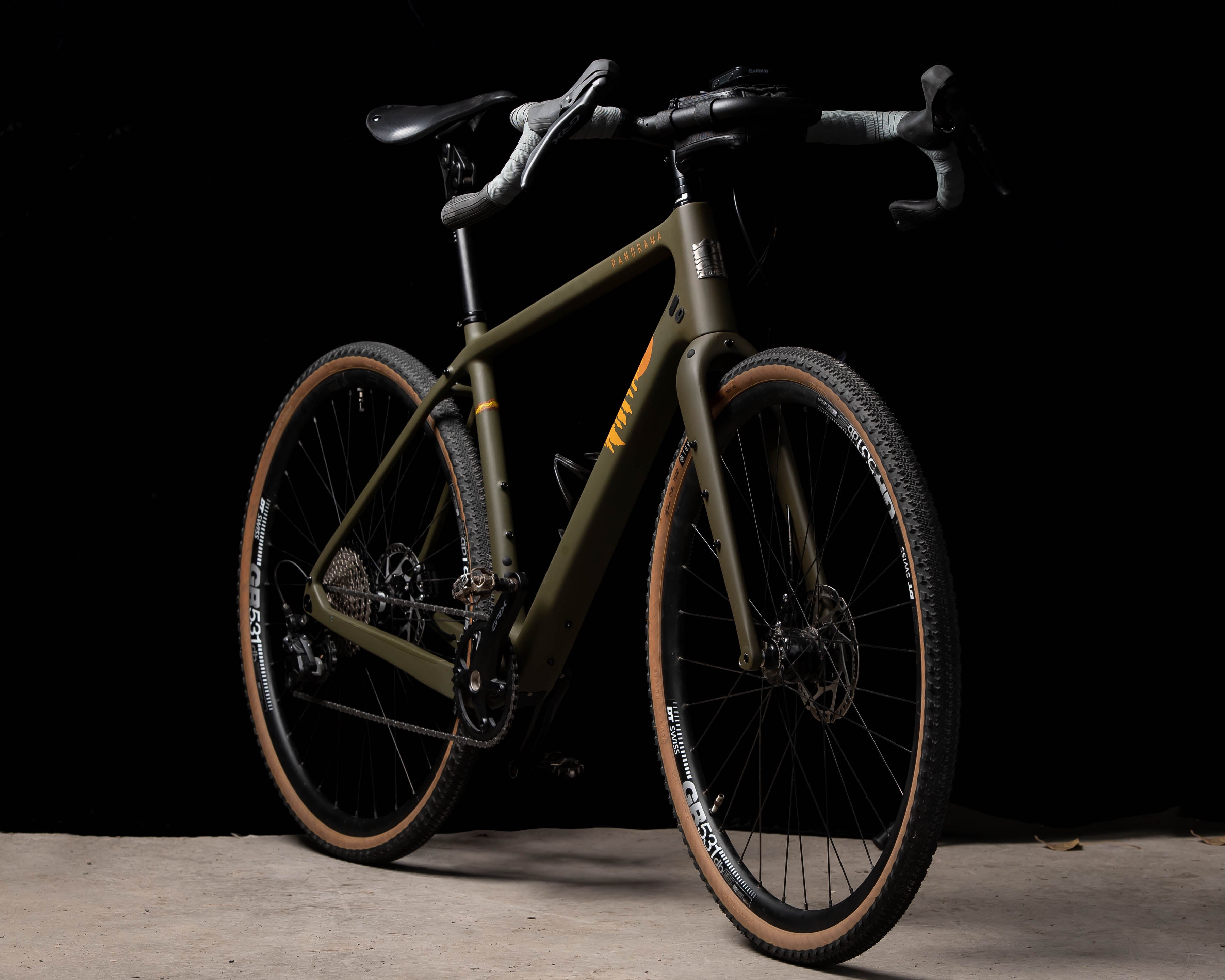
Behind the Design - Designing carbon frames for bikepacking
What are the considerations in designing a carbon fiber frame for bikepacking/touring or ultra-distance cycling?
It was in 2006 that I first got my hands on carbon fiber, back when I started working for Guru Cycles, a local small bike manufacturer. This was shortly before I completed my studies in mechanical engineering.
My journey as a composites engineer continued with the development of sports products (cycling and others) and eventually in the aerospace industry, before Panorama Cycles was launched in 2016.
The decade spent handling laminate designs, studying the types of fibers or resins used, and optimizing tooling and manufacturing processes has allowed me to appreciate the potential of this material.
The goal of this short article is to explain our approach to designing carbon fiber frames, intended for our preferred customers: adventure long-distance cycling enthusiasts.
Words : Simon Bergeron, Owner and Frame designer at Panorama Cycles
Photo Credits: Serge Gouin, Tyler Weber, Trevor Browne
The main perks of carbon fiber
Carbon fiber is derived from a polymer (PAN) that is spun and then treated through carbonization. A composite material is obtained when this fiber is consolidated with a resin, epoxy in our case.
The mechanical properties of the composite are largely dictated by the fiber, as it occupies a higher volumetric fraction than the resin, and these properties (with a few exceptions, which we will discuss later) far exceed those of the resin.
So, why is carbon fiber so popular?
This can be partly explained by its excellent stiffness-to-weight ratio (specific stiffness) and strength-to-weight ratio (specific strength).
- Carbon fiber has a density of about half that of aluminum.
- For a medium modulus fiber (T700, widely used in the sports industry), the stiffness of the fiber is about three times higher than that of 6061-T6 aluminum.
- For the same fiber (T700), its strength is about 15 times that of 6061-T6 aluminum.
Unlike metals, which have the same mechanical properties in all directions (known as isotropic), carbon fiber has unique properties aligned with its orientation (known as anisotropic). This allows for aligning the fibers according to the loading case the structure will undergo, using targeted local reinforcements, and avoiding the use of superfluous material.
A simple example of fiber alignment on a bike frame would be the seat tube. This tube experiences a lot of bending due to the pedaling force induced at the crankset and little torsion. Therefore, we tend to use more fibers aligned in the direction of the tube (at 0 degrees) rather than fibers at other angles (+/-30 or +/-45 degrees, for example) which would have more impact on the torsional stiffness of the tube.


Limitations
1 - Complex process / expensive tooling
As with anything in life, the use of carbon fiber is not without its drawbacks. First, in the vast majority of cases, manufacturing high-performance carbon fiber parts requires a significant amount of manual labor. Imagine a roll of carbon fiber, pre-impregnated with resin. This roll is unrolled and laid flat, then cut into multiple shapes. These hundreds of shapes are then laminated onto different tools to be cured under pressure in a mold to obtain the final piece.
The hand-layup process described above not only requires highly precise tools (a major investment in development, manufacturing, and maintenance) to produce quality parts but also a highly skilled workforce that follows work instructions to the letter. Each of the hundreds of pieces must be installed like a puzzle, by hand, in a very precise position to achieve the desired result. The potential for error is high.
Yes, there are some automated manufacturing processes, but these are generally used in conjunction with dry fiber, where the resin is injected. While excellent in the context of large-scale production, the parts obtained through these processes generally have higher resin volume fractions than those using pre-impregnated fiber. As a result, their mechanical properties suffer somewhat.
Chic-Chocs front triangle mold

2 - Impact resistance
As mentioned earlier, carbon fiber has desirable properties in terms of weight, stiffness, and strength. However, the Achilles' heel of a carbon tubular structure is often its resistance to impact damage.
A direct impact on a bike frame can unfortunately cause damage that is not visible to the naked eye. This damage manifests as delamination between fibers (interlaminar). These delaminations, combined with fatigue due to the cyclic stress applied to the bike during pedaling, become sources of crack initiation.
With this in mind, there are good practices to adopt when developing a bike frame, especially when designing adventure bikes.
Our approach for carbon bikes
We design bikes for our customers who are enthusiasts of ultra-distance, long-distance touring, and bikepacking. While performance, often synonymous with stiffness-to-weight ratio in the cycling world, is sought after for our carbon bikes, it is never at the expense of durability.
1 - Materials
While much attention is often focused on carbon fiber, we must remember that a significant portion of the impact resistance of a thin tubular composite structure (a bike) comes from the resin. There are additives we can add to the resin to improve its resilience, thus increasing interlaminar resistance (adhesion between layers). In the past, we have also used thermoplastic fiber veils (Xantu Layr) between the different layers of fiber to enhance the properties of the epoxy and increase impact resistance.
Regarding the fiber, high modulus fiber (high stiffness, e.g., T800 or T1000) is often used when the goal is to stiffen a structure while using the least amount of material possible. While the results can be adequate for a road bike or a bike dedicated to racing on known terrain, this fiber, considered brittle, is not a suitable material choice for a bike that must support a load or provide a higher level of resistance for long-distance travel in remote areas.
2- Layup Development
Of course, our carbon frames are lighter than their steel or aluminum equivalents on the market. However, they do not win prizes for the lightest carbon frames. In truth, no matter what you hear, you can't have both ultra-light and ultra-strong.
Our approach to laminate design to achieve maximum strength is to use thinner carbon layers, in greater quantity, and with a wide variety of orientations. This brings us two significant advantages:
a) Using many thin layers rather than a few thick layers certainly increases costs. Thin material is more expensive, more carbon layers need to be cut, and they all have to be handled individually. However, using 10 thin layers instead of 5 thick layers increases the number of interfaces between layers from 4 to 9. This doubling of interfaces significantly enhances the impact resistance of the structure.
b) Using more layers allows for a greater variety of fiber orientations. By covering more fiber angles in the laminate, we ensure better resistance to potential impacts.


Left: Xantu Layr over carbon fiber / Right: early Katahdin prototype with Zylon fibre
3 – Process
No laminate design is valuable if the process is not adapted and optimized for the parts to be molded and the selected materials.
The determining factor for the quality of a piece is the pre-forming before its curing, where all the fiber pieces are laminated onto a mandrel that precisely represents the inside of the tube. All pieces must be well pre-compacted to minimize the risk of porosity in the molded piece (air bubbles trapped between two layers).
Once the pre-form is complete, it goes into the mold, which will be heated. When a precise temperature is reached, pressure is applied inside the piece so that the carbon fiber laminate conforms to the shape of the mold.
The relationship between temperature and the application of pressure is crucial. The epoxy gradually liquefies as the temperature rises before quickly hardening and taking its final shape. The pressure applied to the piece serves to thoroughly wet the fibers when the epoxy is at its lowest viscosity and to expel excess resin from the piece, along with any air bubbles that would create porosities in the piece.
Although we work with manufacturing partners, our oversight of these manufacturing parameters is important and is part of our usual quality controls.
Conclusion
As with steel frames, it should not be assumed that all carbon fiber bike frames are designed with the same objectives in mind. Beyond the geometry and characteristics of the frame, it is important to us that our customers understand the thinking behind our carbon bikes. Thank you for taking the time to read. Feel free to send us your questions/comments by email!











